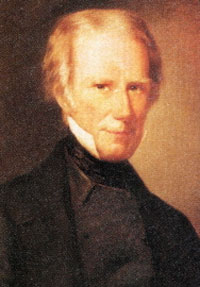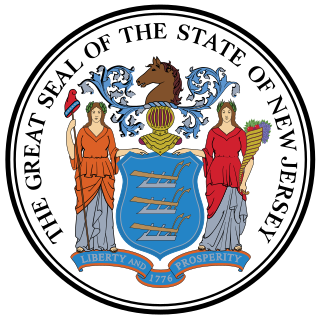
Elections to the United States House of Representatives were held in 1880 for Representatives to the 47th Congress, and coincided with the 1880 presidential election which was won by James A. Garfield, who was a member of the House at the time.

Elections to the United States House of Representatives for the 13th Congress were held at various dates in different states between April 1812 and August 1813 as James Madison was re-elected President.

Elections to the United States House of Representatives for the 12th Congress were held at various dates in different states between April 1810 and August 1811 during President James Madison's first term.

Elections to the United States House of Representatives for the 4th Congress were held on various dates in each state between August 25, 1794, and September 5, 1795 (Kentucky). The election was held during President George Washington's second term. The voters of Tennessee elected their first congressional representative on October 7, 1796.

The 1808 United States House of Representatives elections in New York were held from April 26 to 28, 1808, to elect 17 U.S. Representatives to represent the State of New York in the United States House of Representatives of the 11th United States Congress. At the same time, a vacancy was filled in the 10th United States Congress.

The 1810 United States House of Representatives elections in New York were held from April 24 to 26, 1810, to elect 17 U.S. Representatives to represent the State of New York in the United States House of Representatives of the 12th United States Congress. At the same time, a vacancy was filled in the 11th United States Congress.

The 1812 United States House of Representatives elections in New York were held from December 15 to 17, 1812, to elect 27 U.S. Representatives to represent the State of New York in the United States House of Representatives of the 13th United States Congress. At the same time, a vacancy was filled in the 12th United States Congress.

The 1814 United States House of Representatives elections in New York were held from April 26 to 28, 1814, to elect 27 U.S. Representatives to represent the State of New York in the United States House of Representatives of the 14th United States Congress.

The 1816 United States House of Representatives elections in New York were held from April 23 to 25, 1816, to elect 27 U.S. Representatives to represent the State of New York in the United States House of Representatives of the 15th United States Congress. At the same time, a vacancy was filled in the 14th United States Congress.

A special election was held in Connecticut's at-large congressional district on September 17, 1810 to fill a vacancy left by the resignation of Samuel W. Dana (F) in May, 1810 after being elected to the Senate.

A special election was held in Maryland's 7th congressional district to fill a vacancy left by the resignation of John Brown (DR) to accept a position as clerk of the county court of Queen Anne's County. Brown had earlier been re-elected to the 12th Congress, thus, his resignation created vacancies in both the 11th and 12th Congresses. Unusually, a single ballot was used for both vacancies. This was the first of at least three examples of this sort of dual-vacancy being filled with one ballot.

Massachusetts held its elections November 5, 1810. Massachusetts law required a majority for election. This was not met in the 15th district necessitating a second election on April 1, 1811.

A special election was held in Massachusetts's 10th congressional district on October 8, 1810 to fill a vacancy left by the resignation of Jabez Upham (F).

A special election was held in Massachusetts's 11th congressional district on October 8, 1810 to fill a vacancy left by the resignation of William Stedman (F) on July 16, 1810.

A special election was held in New Jersey's at-large congressional district on October 30, 1810 to fill a vacancy left in the 11th Congress by the death of James Cox (DR) on September 12, 1810.

A special election was held in New York's 2nd congressional district April 24–26, 1810 to fill a vacancy left by the resignation of William Denning (DR), who had never actually served.
The 1810 United States elections occurred in the middle of Democratic-Republican President James Madison's first term, during the First Party System. Members of the 12th United States Congress were chosen in this election. During the 12th Congress, Louisiana joined the union. Democratic-Republicans continued to control both chambers of Congress.

Elections to the United States House of Representatives were held in 1870 and 1871 to elect Representatives for the 42nd Congress, and were held in the middle of President Ulysses S. Grant's first term.










